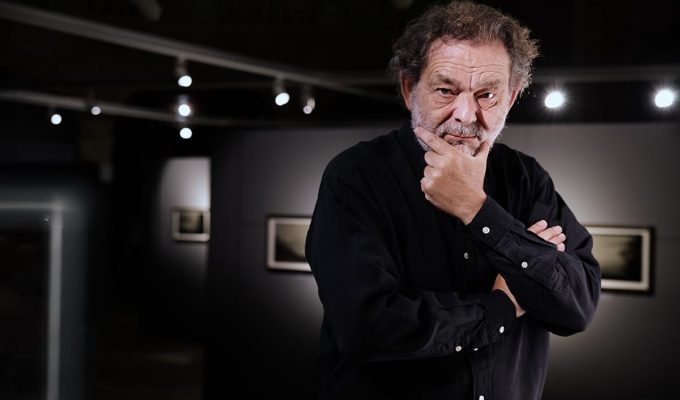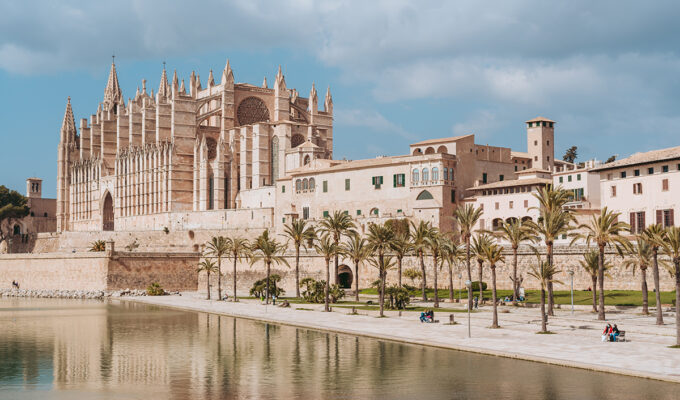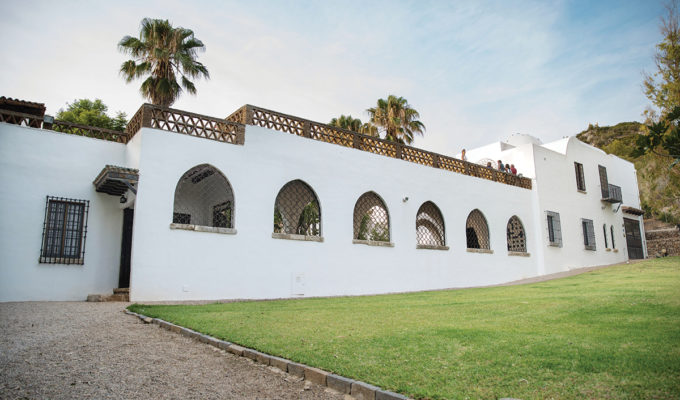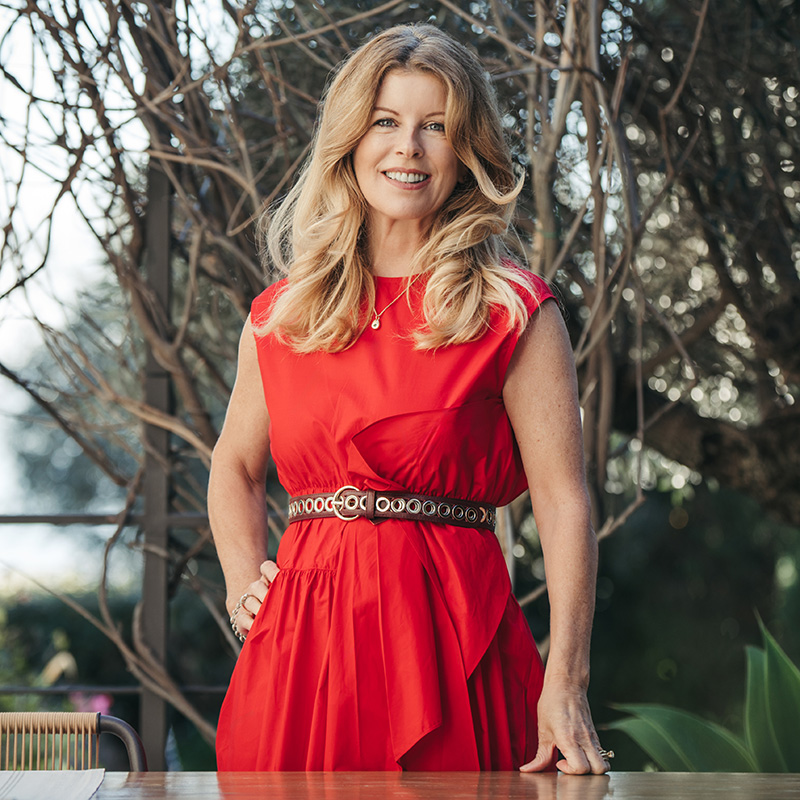
We walk through the large, magnificent concrete building – whose interiors are decorated with alabaster and were designed by renowned architect Rafael Moneo – until we finally meet Joan. He is the only heir to Miró’s legacy after the death of his older brothers. Joan is a likeable and elegant socialite, but with a certain revolutionary touch – to live the pursuit of modernity and life with common sense, and fewer prefabricated schemes.
The Pilar i Joan Miró Foundation is located next to “Son Abrines”, the Miró’s private residence since 1956, and houses two art studios: Son Boter, whose walls are covered with original graffiti, and a second, which was designed by Josep Lluís Sert, the first Spanish architect to become famous worldwide and also a personal friend of the painter. The house was opened in 1992 as a cultural art centre and has a collection of nearly 6,000 works of art. In addition, examples from emerging, new artists are exhibited there temporarily and there is a study centre for scholars. More than 140,000 visitors flock there annually, especially schools, international universities, and individuals.
The current exhibition is called “La Llum de la Nit”, which comprises approximately 50 works – some of them previously unseen – covering the period between the ‘60s and ‘70s, one of the most productive but least-explored phases of the artist. It is truly a unique exhibition, which all important art museums in the world would like to show.
We talk to Joan about the fact that every tourist who travels to New York City always plans a museum visit. The same tourist comes to Mallorca and is just focused on sunshine and beach.
“We don´t promote ourselves well enough as a cultural destination for tourists. It´s a shame, because it is an area gaining appreciation for itself and generally interests more and more people,” says Joan.
“We have the Cathedral and several gothic or modernist buildings that embody a truly rich heritage of cultural and artistic trends and styles, which exceed the level of many other destinations – but other destinations promote their own better.
“In the past, Agatha Christie, Robert Graves, Frédéric Chopin and Miró came here – among many others. Miró is an unexplored gem, a potential magnet that could channel international interest of an unimaginable level,” Joan continues. “Picasso, a good friend of my grandfather, was the greatest artist of the 20th century and Miró the greatest artist of the 21st century – due to his imagination, his poetic metaphors, and colours. His simple language is easy to understand for all nationalities and cultures, adults and children.”
 “Territorio Miró” is the great campaign of Palma´s mayor Mateo Isern and deputy for culture Fernando Gilet, to bring the foundation closer to the Mallorcans. Joan: “Foreignersor tourists looking for a different Mallorca will love it.” The campaign connects Sóller and Palma and its goal is to make the name of Miró known at international level. In addition, the city of Palma is increasingly promoting its cultural riches to fight the seasonality on the island and to strengthen the image of an important cultural destination throughout the year.
“Territorio Miró” is the great campaign of Palma´s mayor Mateo Isern and deputy for culture Fernando Gilet, to bring the foundation closer to the Mallorcans. Joan: “Foreignersor tourists looking for a different Mallorca will love it.” The campaign connects Sóller and Palma and its goal is to make the name of Miró known at international level. In addition, the city of Palma is increasingly promoting its cultural riches to fight the seasonality on the island and to strengthen the image of an important cultural destination throughout the year.
“What do we use when we promote Spain?” asks Joan. “The sun, designed by Miró, as a logo for tourism here. He also created the logo for the promotion of Mallorca tourism, one of the oldest tourist establishments in the world.”
Miró Foundation is helping to spread culture through its international exhibitions. Soon the collection will travel to Hamburg, Düsseldorf, Frankfurt, Zurich, Istanbul, Hong Kong, and Brazil – as an example of Mediterranean and Mallorcan culture. “I just prepared two books to be published in 2015. ‘The eye of Miró’ displaying all the objects the artist collected at beaches, in the countryside, or in the mountains. Later he used it for sculptures or paintings. And another one called ‘Miró and music’.
Joan remembers his grandfather as a reserved and quiet, but very tender and loving grandfather, with whom he spent the weekends and ate paella on Sundays. Everything he did and said was meaningful: Miró lived 10 years after Picasso’s death in 1973, as the globally recognized number one among artists. He witnessed the death of Franco and all the resulting political and cultural changes. During these years he also founded the two foundations in Palma and Barcelona. Miró was a visionary who wanted a united Spain within a united Europe and a globalized world.
“In 1978 when I was 10 years old, he said: ‘Listen Joan, now I’ll take you to my art studio!’ And when I saw all these images, colours, and brushes, the importance of his work became clear. It is a universal heritage which should be more appreciated. The honour is having his foundation here on site. From New York to Tokyo they would be keen to have it, I’m absolutely sure.”
Photos by Sara Savage







